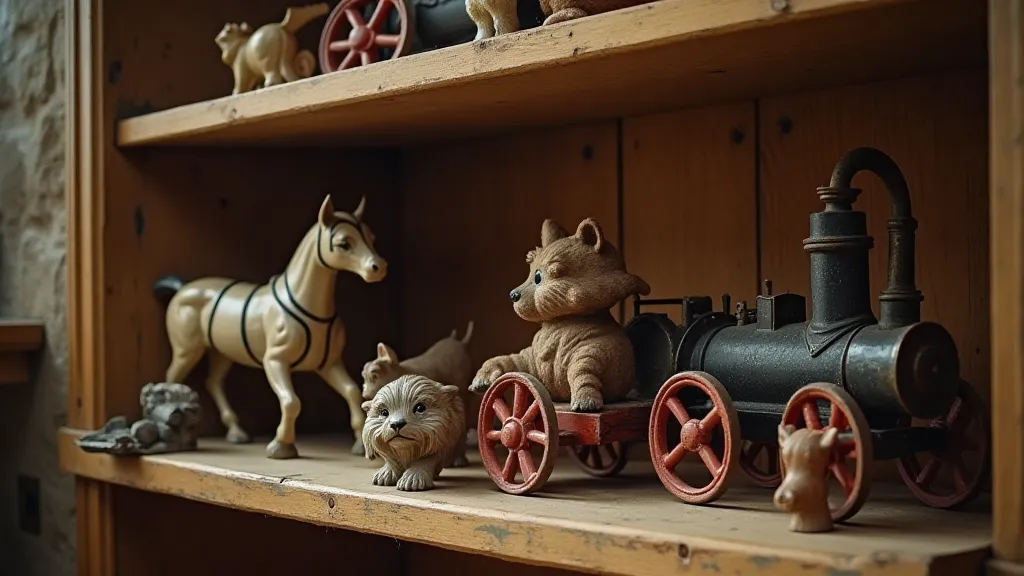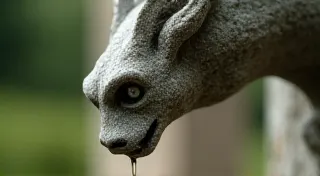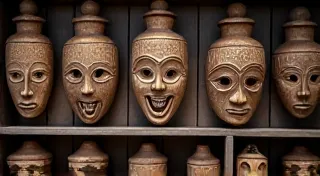The Clockmaker's Daughter: Female Involvement in Cast Iron Toy Production
The clang of metal against metal. The gentle rumble of machinery. The meticulous touch of a skilled hand shaping raw material into a fleeting moment of childhood joy. We often picture the cast iron toy factories of the late 19th and early 20th centuries populated solely by men – burly machinists, stern factory owners, and dedicated clerks. But a closer look reveals a more nuanced and compelling story, one that includes the vital, often-overlooked, contributions of women. Their presence wasn't simply a matter of filling labor needs; they were integral to the manufacturing, sales, and even the creative heart of the cast iron toy industry.
The popular image of the Victorian factory – a bleak and largely male domain – certainly held some truth. However, the reality for many families was intertwined with the rhythms of the factory floor. Women’s roles, dictated by societal expectations and economic necessity, were often fluid. They weren't often supervisors or engineers, but they were indispensable in numerous capacities, from finishing and painting to sales and marketing. Imagine a young woman, barely out of her teens, meticulously smoothing the rough edges of a newly cast horse, preparing it for the final glaze. This wasn’t just a job; it was a contribution to a legacy of childhood wonder.
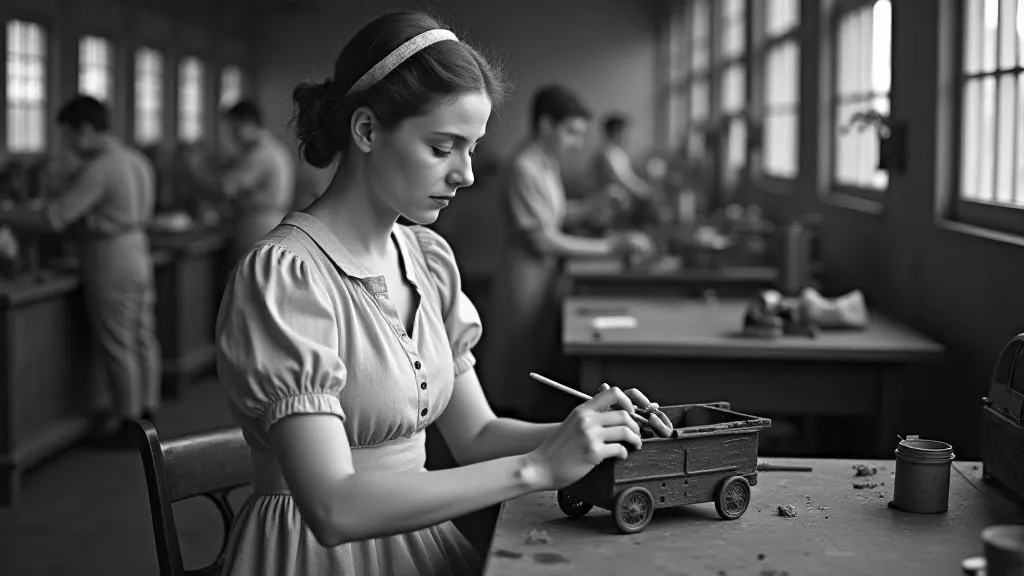
Beyond the Factory Floor: Sales and Management
While many women performed physical labor, their influence extended far beyond the factory floor. In a society where direct salesmanship was frequently seen as a suitable avenue for women to earn a living, many played crucial roles in marketing and selling these cherished toys. Toy fairs and department stores were bustling scenes, and it was not uncommon to see women actively engaged in sales pitches, demonstrating the toys’ intricate mechanisms, and captivating potential customers. Think of a woman, a clockmaker’s daughter perhaps, standing behind a display of J.W. Doll's circus wagons, her voice ringing with enthusiasm as she described the miniature horses and brightly painted carriages. Her knowledge of the toys wasn't simply rote memorization; it was born of familiarity and a genuine appreciation for the craftsmanship involved.
Moreover, in many family-run businesses, women were vital in managing finances and overseeing daily operations. They weren't always formally recognized for these contributions, their roles often undocumented in corporate records, but their influence was undeniable. The wives of factory owners, for instance, frequently managed the household staff, handled correspondence, and were deeply involved in the overall well-being of the business. Consider the story of Elizabeth, the wife of a German immigrant who established a small cast iron toy factory in Ohio. While her husband focused on production, she expertly managed the accounts, ensuring the business remained financially stable and able to weather economic downturns. Her quiet dedication was the bedrock upon which the company was built.
The Art of Finishing: A Woman's Touch
The manufacturing of cast iron toys was a complex process, involving casting, machining, and, crucially, finishing. After the rough casting emerged from the molds, it was the finishing process that transformed it into a plaything of charm and detail. This is where women often excelled. The laborious task of removing imperfections, smoothing surfaces, and applying the vibrant paints and glazes demanded a delicate touch and keen eye for detail – qualities often associated (and sometimes imposed) on women. The application of the paint wasn’t simply a mechanical process; it was an art form. Layers of color were meticulously applied, highlighted, and shaded to bring the toys to life. A chipped ear on a cast iron dog, a slightly uneven glaze on a miniature carriage – these subtle imperfections, often overlooked today, were a testament to the human hands that created them.
It’s worth noting that the paint used in these early toys contained lead, a significant health hazard. While the risks were poorly understood at the time, the fact that women – often younger and smaller – were frequently assigned to this task speaks volumes about the economic realities of the era and the perceived expendability of their labor. Despite the dangers, they persevered, contributing to a legacy of beloved toys that continue to captivate collectors worldwide.
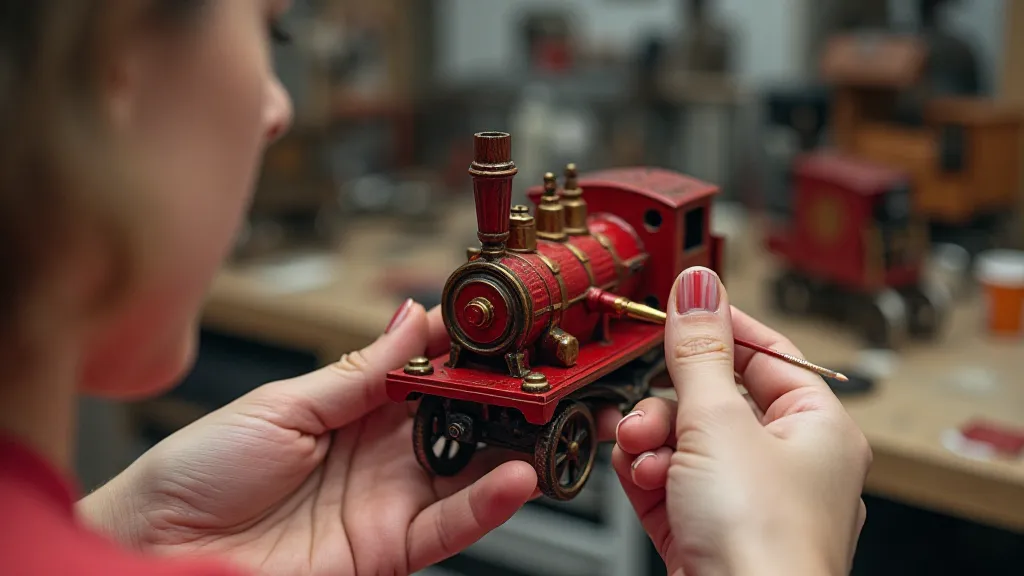
Legacy and Remembrance
The contributions of women in the cast iron toy industry have largely been erased from official histories. They were rarely acknowledged in patents, advertising campaigns, or corporate narratives. Yet, their presence is palpable in the toys themselves. The subtle nuances of a hand-painted detail, the gentle curve of a molded carriage wheel – these are whispers of the women who shaped these treasured objects. Recovering their stories is more than just an exercise in historical accuracy; it's a matter of honoring the unsung heroes of a beloved craft.
The internet, with its ability to connect collectors and researchers worldwide, has created new avenues for uncovering these forgotten narratives. Antique toy catalogs, estate sales, and family heirlooms occasionally yield clues – a faded photograph, a handwritten ledger, a tantalizing mention in a personal letter. These fragments, painstakingly pieced together, offer glimpses into the lives of the women who helped create a world of childhood magic.
For those of us who collect and cherish these antique toys, it’s important to remember the human element behind the metal and paint. To consider the clockmaker’s daughter, meticulously shaping the cast iron horse, or the wife of the factory owner, ensuring the business thrived. Their stories, though often untold, are an integral part of the history of cast iron toys, a testament to the enduring power of human creativity, dedication, and the quiet strength of women.
